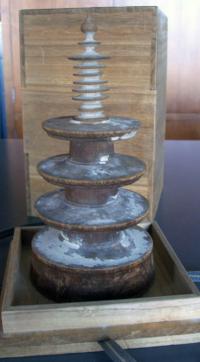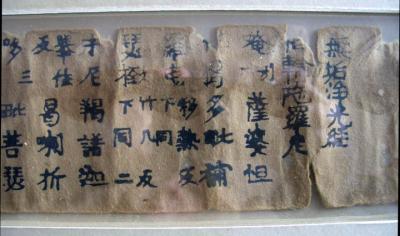The 46th imperial ruler of Japan was Empress Kōken (孝謙天皇, Kōken Tennō) who ruled from 749-758. The eccentric queen suffered from depression and on the advice of her cousin, Fujiwara Nakamaro, finally abdicated the throne. Friends introduced her to a young, handsome Buddhist monk named Dōkyō and under his care, she made a miraculous recovery.
Kōken became devoted to this monk, brought him into the royal family as a Master of Healing, and (depending on which history you read) had an intimate relationship with him. Her cousin objected to the monk and led a rebellion. Nakamaro was killed and Kōken restored herself to the throne, this time under her father’s name, as Empress Shōtoku (称徳天皇 Shōtoku-tennō) in 764.
As a sort of penitence, she had one million dharani (Buddhist incantations or prayer charms) printed and one million tiny wood pagodas built in which to store the prayers. Completed around 770, these slips of paper—now held in collections around the world—represent some of the earliest printed texts. They are known as the Hyakumanto Dharani or one million pagoda prayers, and Princeton University library hold two.
The text consists of four Sanskrit prayers of the Mukujoko-kyo, entitled Kompon, Jishinin, Sorin and Rokudo from the Darani-kyo. Both the Scheide Library and the graphic arts division hold sections of the “short” Sōrin darani. (WHS E.1.2.1 and GAX 2009- in process).
Royal printers created eight relief bronze printing plates with the prayers transliterated in Chinese characters. At least 125,000 slips of paper were printed from each plate in order to complete the run of 1,000,000 prayers. The pagodas were distributed to temples around Japan as thanksgiving for the suppression of the Rebellion of 764.
A detailed article by Mimi Hall Yiengpruksawan “One millionth of a Buddha: the Hyakumanto Dharani in the Scheide Library” from the Princeton University Library Chronicle 48 (1987): 224-38, can be read in full at: http://libweb5.princeton.edu/visualmaterials/pulc/pulcv48n_3.pdf
(*Note: this is a very large file)


